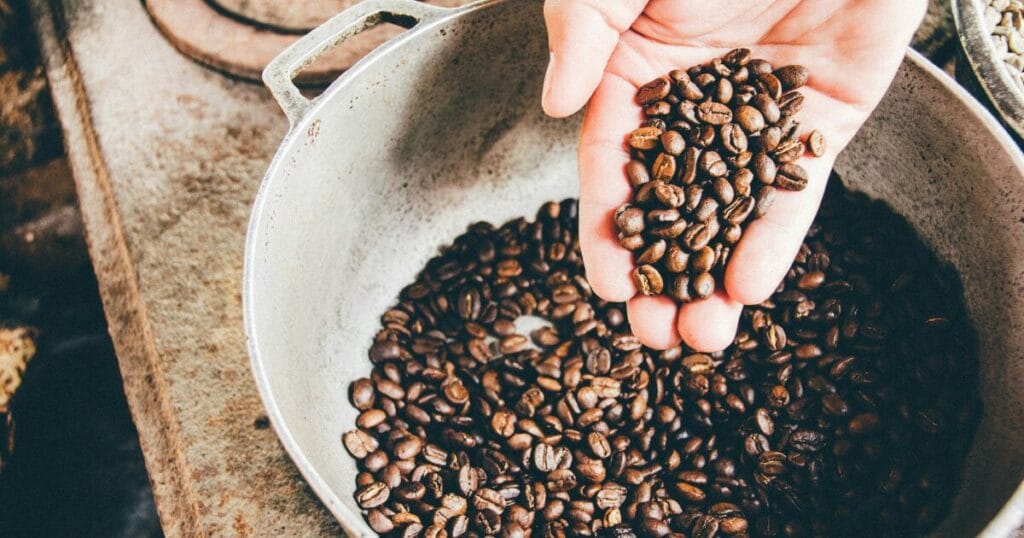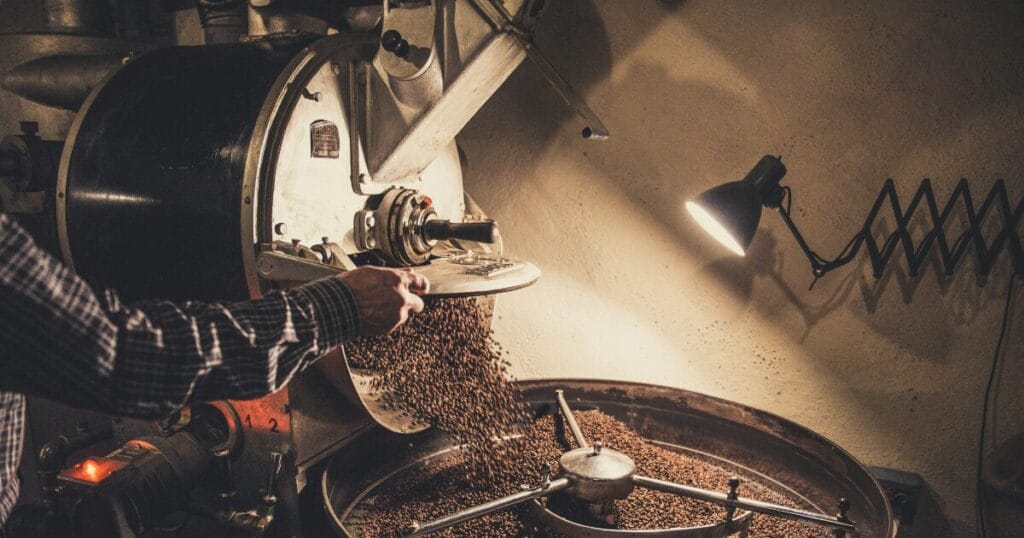Coffee Overview – What is Coffee and How is It Made Best Beginner’s Guide
Wake up and smell the coffee! Ah, that rich, aromatic scent that can instantly transport you to a cozy café or kickstart your day with a jolt of energy.
Coffee is more than just a beverage; it’s an experience, a ritual that has been cherished for centuries. But have you ever wondered what exactly coffee is and how it is made? This Coffee Overview will help you with this.
Join us on this caffeinated journey as we delve into the world of coffee beans, roasting techniques, brewing methods, popular drinks from around the globe, health benefits (and risks!), and tips for crafting the perfect cup at home.
So grab your favorite mug and let’s dive into this stimulating exploration of all things coffee overview!
Table of Contents
Brief Coffee Overview – Coffee History
The history of coffee is rich and fascinating, spanning centuries and continents. It all began in the highlands of Ethiopia, where legend has it that a goat herder named Kaldi discovered the energizing effects of coffee beans after noticing his goats becoming lively and restless upon eating them. This discovery eventually made its way to Arabia, where coffee cultivation began on a larger scale.
By the 15th century, coffee had gained popularity among Muslims for its ability to help stay awake during long prayer sessions. Coffee houses started popping up in cities like Mecca and Cairo, serving as social hubs for intellectuals and artists to gather and discuss ideas.
In the 17th century, coffee made its way to Europe through trade routes. Initially met with skepticism by some religious groups who believed it was associated with “infidels,” it soon became widely embraced across the continent. The first European coffee house opened in Venice in 1645, sparking a trend that quickly spread throughout major cities.
Coffee’s popularity continued to soar throughout the years, leading to innovations such as instant coffee in the late 19th century and espresso machines in the early 20th century. Today, we can’t imagine starting our day without a cup of this beloved beverage.
As you sip your morning brew or enjoy an afternoon pick-me-up at your favorite café, take a moment to appreciate how this humble bean has shaped cultures around the globe. From ancient rituals to modern indulgences, coffee continues to captivate our taste buds and invigorate our senses.
Types of Coffee Beans.

When it comes to coffee beans in coffee overview, there is a wide variety of beans to choose from, each with its unique flavor profile and characteristics. Let’s take a look at some of the most popular types of coffee beans.
1. Arabica:
This is the most common type of coffee bean and accounts for about 60% of global production. Arabica beans are known for their smooth, balanced flavor with notes of sweetness and acidity. They are typically grown in higher altitudes and require specific growing conditions.
2. Robusta:
As the name suggests, Robusta beans are known for their robust flavor profile. They have a stronger taste compared to Arabica beans, often described as earthy or nutty. Robusta beans also contain more caffeine than Arabica beans, making them popular in espresso blends.
3. Colombian:
Colombia is renowned for producing high-quality coffee beans that have a rich and mild flavor profile. Colombian coffee is often considered well-balanced with notes of caramel or chocolate.
4. Ethiopian:
Ethiopia is the birthplace of coffee, so it’s no surprise that Ethiopian coffee has an exceptional reputation among connoisseurs.
The flavors can range from fruity and floral to wine-like or even tea-like depending on the region where they’re grown.
5. Brazilian:
Brazil leads the world in terms of coffee production. Their coffees tend to have lower acidity levels but offer nutty, chocolaty flavors with hints of sweetness.
6. Jamaican Blue Mountain:
Known as one of the finest coffees in the world, Jamaican Blue Mountain has a smooth taste with subtle hints of fruitiness.
Its limited availability makes it highly sought after by coffee enthusiasts worldwide. These are just a few examples of countless varieties available around the globe.
Whether you prefer something bold and strong like Robusta or appreciate the mellow nuances found in Colombian Ethiopian coffees, the choice ultimately comes down to your personal preferences. So go ahead, explore, and experiment with
The Coffee Roasting Process.

Without understanding the Roasting process, the coffee overview is incomplete. Roasting is a crucial step in the coffee-making journey. It takes green coffee beans and transforms them into the aromatic, flavorful gems we know as roasted coffee beans.
Step1. Heating the Coffee Beans:
During the roasting process, heat is applied to the green coffee beans, causing chemical changes that unlock their unique flavors. The temperature and duration of roasting can greatly influence the taste profile of the final brew.
Step2. First Crack:
As the beans roast, they go through different stages known as “first crack” and “second crack.” The first crack occurs when steam pressure builds up inside the bean, causing it to expand and release a cracking sound. This stage typically produces light to medium-roasted coffees with brighter acidity.
Step3. Second Crack:
The second crack happens when more intense heat causes additional expansion and cracking. At this point, oils are released from within the bean, resulting in darker roasts with richer flavors and lower acidity levels.
Step.4 Varieties of Coffee Roast Levels:
The degree of roast can vary from light (often referred to as cinnamon or blonde) to medium (such as city or American), medium-dark (full city or Vienna), dark (French or Italian), all the way to very dark (espresso or Spanish).
Step.5 Roasting Coffee with Precision:
It’s important for roasters to carefully monitor time and temperature during this process to achieve desired flavor profiles while avoiding over-roasting or burning. Each type of bean requires specific attention based on its origin and characteristics.
Roasting is an art form that requires skillful precision combined with a deep understanding of how each variable affects flavor development. Mastering this process allows for endless possibilities in creating delicious cups of coffee that cater to individual preferences.
Understanding the roasting process provides insight into why different coffees have distinct flavors. From light-bodied fruity notes to bold chocolate undertones, it all starts with carefully selecting quality green beans followed by skilled roasting techniques.
5 Types of Coffee Brewing Methods.
When it comes to brewing a delicious cup of coffee, there are several methods to choose from. Each method has its unique way of extracting the flavors and aromas from the coffee beans. Let’s take a look at some popular brewing methods:
1. Pour Over:
This method involves pouring hot water over freshly ground coffee placed in a filter cone or dripper. The slow pour allows for precise control over-extraction, resulting in a clean and flavorful cup.
2. French Press:
With this method, coarsely ground coffee is steeped in hot water for several minutes before being plunged with a mesh filter. It produces a full-bodied brew with rich flavors and sediment-free texture.
3. Espresso Machine:
Espresso is made by forcing pressurized hot water through finely ground coffee under high pressure. This results in concentrated and intense flavors often enjoyed as shots or used as the base for various espresso-based drinks like lattes and cappuccinos.
4. Aeropress:
This portable device uses air pressure to extract flavor from the coffee grounds within seconds. It offers versatility in terms of strength and taste profile, making it popular among travelers or those looking for quick yet quality brews.
5. Cold Brew:
In this method, coarse-ground coffee is steeped in cold water overnight (or up to 24 hours) to create a smooth and low-acidic concentrate that can be diluted with water or milk according to preference.
Remember that each brewing method requires different ratios of coffee-to-water, grind size, temperature, and steeping time to achieve optimal results. So feel free to experiment until you find your perfect cup!
The Most Popular Coffee Drinks Around the World
Although there are plenty around the world We have covered only the 5 most popular coffee drinks in this coffee overview. Coffee is a beloved beverage that has evolved into countless delicious and unique creations around the world. Each country has its take on how to enjoy this caffeinated elixir, resulting in an array of delightful coffee drinks.
1-Espresso.
Espresso is number one in this coffee overview. In Italy, espresso reigns supreme. This concentrated shot of caffeine is enjoyed by Italians throughout the day, often standing at a bar counter while savoring every sip. Cappuccino is another Italian favorite, consisting of equal parts espresso, steamed milk, and frothy milk foam.
2-Frappe.
Travel to Greece and you’ll find frappé, a refreshing iced coffee made with instant coffee powder shaken vigorously with cold water until it forms a frothy layer on top. It’s typically served with ice cubes and sometimes sweetened condensed milk for added richness.
3-Turkish Coffee.
In Turkey, they have their traditional brewing method called Turkish coffee. This strong brew is prepared using finely ground coffee beans boiled in a special long-handled pot called a cezve. It’s often served unfiltered with grounds settling at the bottom of the cup.
4-Vietnamese Iced Coffee.
Jump over to Vietnam and you’ll encounter ca phe sua da or Vietnamese iced coffee. This drink offers an indulgent combination of bitter and creamy flavors, made with dark roast beans brewed through a small metal drip filter directly into a glass containing sweetened condensed milk.
5-De Café or “Coffee Mate”.
Heading south to Argentina brings us to mate de café or “coffee mate.” This popular drink combines yerba mate (a traditional South American herbal tea) with freshly brewed black coffee for an invigorating blend that Argentinians love to start their day with.
These are just a few examples of the many amazing ways people enjoy their daily dose of caffeine around the world. The beauty lies in discovering new flavors and cultural traditions as we explore different countries’ interpretations of our beloved beverage – proving that no matter where you are in the world, there will always be something exciting and delicious waiting to be savored in a cup of coffee.
The Most Popular Coffee Brands in the World.
After a deep coffee overview, we would like to chat about the most popular coffee brand available for coffee lovers. Coffee is a super popular drink enjoyed by people all around the world. Some coffee brands are super famous, and I’m here to tell you about them.
Starbucks:
You’ve probably seen their green logo everywhere. They started in Seattle in 1971 and now have coffee shops in over 80 countries. They offer lots of different coffee drinks and snacks.
Nescafé:
This brand is owned by Nestlé and has been around for a long time. They’re famous for their instant coffee, which is easy to make and comes in lots of flavors.
Dunkin’ (formerly Dunkin’ Donuts):
You might know them for their donuts, but they also have great coffee. You can get hot or cold coffee, espresso drinks, and even flavored coffee.
Lavazza:
From Italy, Lavazza has been making coffee for over 120 years. They have different types of coffee, and their blue packaging is easy to spot.
Illy:
Another Italian brand, Illy is known for its special blend of coffee beans. They make sure their coffee tastes really good, and they also care about the environment.
Keurig:
You might have a Keurig coffee maker at home. They make single-serve machines and coffee pods from different brands, so you can enjoy coffee quickly and easily.
Peet’s Coffee:
This brand started in California in 1966 and loves dark-roasted coffee. They focus on getting high-quality beans and roasting them in small batches.
These are some of the most famous coffee brands in the world, each offering something unique. Coffee is always changing, with new brands and trends popping up, so there’s something for everyone, whether you like instant coffee or a fancy espresso.
Health Benefits and Risks of Drinking Coffee.
Health benefits and side effects of coffee are also included in this coffee overview. Coffee is not just a delicious and energizing beverage, it also offers several potential health benefits. Studies have shown that moderate coffee consumption can reduce the risk of certain diseases such as Parkinson’s disease, liver cancer, type 2 diabetes, and heart failure. Coffee is rich in antioxidants and beneficial compounds like chlorogenic acid, which have anti-inflammatory effects on the body.
On the flip side, excessive coffee intake can lead to negative health effects. Consuming too much caffeine can cause restlessness, anxiety, increased heart rate, and even insomnia in some individuals. It may also contribute to digestive issues like acid reflux or stomach ulcers.
It’s important to note that everyone reacts differently to caffeine, so it’s essential to listen to your body and monitor how you feel after consuming coffee. If you experience any adverse effects or are sensitive to caffeine, it may be best to limit your intake or opt for decaffeinated versions instead.
As with most things in life, moderation is key when it comes to coffee consumption. Enjoying a cup or two of coffee per day can provide some potential health benefits without causing harm. However, if you find yourself relying on multiple cups throughout the day or experiencing negative effects from caffeine overload, it might be worth considering cutting back.
Remember that while coffee has its potential perks and drawbacks for individual health outcomes vary greatly among individuals based on factors such as genetics and overall lifestyle habits!
Tips for Making the Perfect Cup of Coffee at Home.
When it comes to making a delicious cup of coffee at home, there are a few key tips that can help elevate your brewing game.
Ingredients and Tools Required.
1. Fresh and High-Quality Beans.
First and foremost, start with fresh, high-quality coffee beans. Look for beans that have been recently roasted and opt for whole beans rather than pre-ground ones.
2. Choose the Best Grinder.
Next, invest in a good grinder. Grinding your coffee beans just before brewing ensures maximum freshness and flavor. It’s best to use a burr grinder rather than a blade grinder as it produces more consistent results.
3. Use Filter Water.
The water you use is also crucial. Aim for filtered water or spring water to avoid any impurities that could affect the taste of your coffee. The ideal temperature for brewing is between 195°F and 205°F (90°C-96°C), so make sure your water is in this range.
Brewing Method.
Now onto the brewing method – there are several options depending on personal preference.
1. Pour-Over.
For a classic cup of drip coffee, consider using an automatic drip brewer or pour-over cone.
2. French Press.
French press enthusiasts might prefer the robust flavors produced by this method.
3. Espresso.
Espresso lovers may want to invest in an espresso machine.
Bonus Tips.
Pay attention to the ratio of coffee grounds to water. A general guideline is one tablespoon of ground coffee per six ounces (180 milliliters) of water, but feel free to adjust according to your taste preferences.
By following these tips and experimenting with different techniques, you’ll be well on your way to creating the perfect cup of joe right in the comfort of your own home! Enjoy exploring the world of coffee brewing and savor every sip!
The Bottom Line – Coffee Overview
Dear Coffee Lovers, now I will sum up this coffee overview for you in short. Coffee is a beloved beverage enjoyed by people all over the world. From its humble beginnings to the vast array of flavors and brewing methods available today, coffee has come a long way in satisfying our caffeine cravings.
In this article, we explored the fascinating history of coffee, from its discovery in Ethiopia to its spread throughout Europe and beyond. We also delved into the different types of coffee beans, highlighting their unique characteristics and flavor profiles.
Understanding how coffee is made involves exploring the intricate process of roasting. The artistry behind roasting brings out the distinct flavors and aromas locked within each bean, creating a delightful cup of java.
We then ventured into the various brewing methods used to extract those delicious flavors from coffee grounds. Whether it’s through drip brewing or espresso machines, there are countless ways to prepare your favorite cup of joe.
As we traveled around the globe, we discovered popular coffee drinks that have become cultural staples in countries like Italy with its iconic espresso shots or Japan with its delicate pour-over techniques. Each region offers a unique twist on how they enjoy their daily dose of caffeine.
While sipping on our favorite brew brings us joy and satisfaction, it’s important to consider both the health benefits and risks associated with drinking coffee. With moderation, coffee can provide an energy boost and even offer some potential health advantages such as improved focus and reduced risk of certain diseases. However, excessive consumption may lead to side effects such as insomnia or increased heart rate for some individuals.
Armed with knowledge about different types of beans and brewing methods discussed earlier in this article along with understanding your personal preferences for taste strength or acidity level will help you create that perfect cup at home every time!
So next time you take a sip from your steaming mug filled with aromatic goodness remember all that goes into making that simple yet complex beverage called Coffee!
Frequently Asked Questions – FAQs
What is coffee?
Coffee is a popular beverage made from the roasted seeds, often referred to as “beans,” of the coffee plant. Originating in Ethiopia, it has become a staple in cultures worldwide due to its stimulating effects.
Where does coffee come from?
Coffee plants mainly grow in a geographical area called the “coffee belt”, which includes regions around the equator – Latin America, Africa, and Asia. Brazil and Vietnam are the most significant producers.
How is coffee made?
The process of making coffee starts with picking ripe coffee berries, followed by the extraction of the seeds. The seeds are then dried, roasted at varying levels depending on the desired flavor, and finally ground down and brewed to make coffee.
What are the different types of coffee?
There are several types of coffee, including Espresso, Cappuccino, Latte, Americano, and Mocha, among others. Their differences lie in the way they are brewed and the ratios of coffee, water, and other additions like milk or chocolate.
Why is coffee so popular?
Coffee’s popularity stems from its rich taste, the stimulation provided by caffeine, and its versatility in various drinks. It’s also a central element in many social interactions, whether at home, work, or at a coffee shop.







